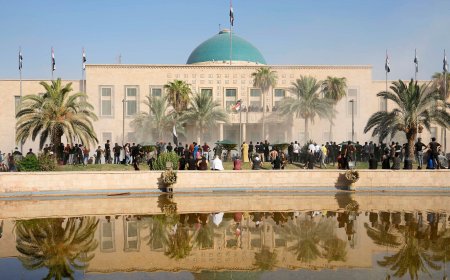Sukkot – the Feast of Tabernacles
Michael EJ Phillips / Lecturer in the Department of French at Salahaddin University

While the number of Jewish families living in the Iraqi Kurdistan Region is unclear (there may still be several), Judaism has been practiced in the area of ancient Mesopotamia and modern-day Iraq since around the 8th century BC. Conditions for Iraqi Jews worsened significantly following the coup d’état in Baghdad of 1 April 1941. This was carried out with support of Nazi Germany and Fascist Italy. Operation Ezra and Nehemiah, which took place from 1951 to 1952, was the most significant part of the large-scale postwar migration of Iraqi Jews to Israel. Up to 130,000 were airlifted with United States and Israeli support in response to the campaign of Baghdad bombings between April 1950 and June 1951. With the rise of the Ba’ath Party, their position became even more tenuous and dwindled to only a handful over time.
It is nonetheless the case that Jewish festivals and religious events continue to take place in the Kurdistan Region of Iraq, for example in the town of Alqosh on the Nineveh Plains. This is known as the final resting-place of the Prophet Nahum, also venerated by Chaldo-Assyrian Christians. Coexistence is one of the fundamental principles of the Iraqi Kurdistan Region under President Nechirvan Barzani, which sees a diverse patchwork of ethnoreligious groups (not least the Yazidis, Muslims, Mandeans, Christians, Kakais and Zoroastrians) and living side-by-side harmoniously in a culture of mutual respect.
Sukkot, the ‘Feast of Tabernacles’, which takes place this year from 6 to 13 October, is a quite remarkable Jewish festival. For a week at the beginning of autumn, the most devout worshippers pray, eat their meals and sleep in huts with roofs made of branches. It originates in the Hebrew Bible, which instructs the children of Israel to ‘dwell in booths for seven days’ (Leviticus 23:42-43). The word ‘sukkah’ means “hut” and its plural form, ‘Sukkot’ gave the festival its name.
It was once one of the three time of pilgrimage, alongside Passover and Pentecost. In ancient times, before the destruction of the Second Temple in 70AD, Jews would travel to Jerusalem on these occasions and bring animals to sacrifice at the Temple. While Passover marks the anniversary of the exodus from Egypt and Pentecost marks the giving of the Torah, the festival of Sukkot has commemorative, agricultural and spiritual significance.
Living under simple branches for a week reminds the Jewish people of their forty years of wandering in the desert, under the protection of divine clouds, after leaving Egypt, which is a founding element of their identity. However, some question the date chosen for this festival, at the beginning of autumn and just after the solemn festivals of the beginning of the year, Rosh Hashanah and Yom Kippur.
If the Hebrews wandered for forty years, any other time of year could have been chosen. Maimonides, a major Jewish philosopher of the 12th century, believed that this period was neither too hot nor too cold (ideal weather for living in a hut) and pointed out that, in every nation of the world, large agricultural harvests are followed by festivities.
Joy plays a central role in the festival of Sukkot, also known as ‘the season of our rejoicing’. Originally, this probably referred to the joy of the farmer: "You shall celebrate the Feast of Tabernacles for seven days, when you bring in the produce of your threshing floor and your winepress (...). You shall celebrate these seven days in honour of the Lord your God in the place He has chosen, for the Lord your God will bless you in all your produce and in all the labour of your hands, and you shall be very joyful." (Deuteronomy 15:13-15).
The joy of the celebrations grows even more on the eighth day, which is a holiday like the first two days of the festival. On this day, called the ‘closing day’, a prayer for rain is recited. According to the Talmud, while rain always falls in accordance with the laws of nature, the timing of its arrival can be affected by human behaviour.
Sukkot is mentioned in the Bible (Exodus 23:16; Deuteronomy 16:13) as an occasion for giving thanks for the harvests drawn from nature over the past year. An essential festival until the destruction of the Second Temple in Jerusalem, it lost its central role when the Jews were exiled from their land and lost contact with agriculture – except through the study of ancient texts and their commentaries.
Today, the joy of the festival culminates on the ninth day, the day after the prayer for rain, during the ‘Feast of the Torah’. On this day, the faithful finish the weekly reading of the Pentateuch and start again at the very beginning: ‘In the beginning, God created the heavens and the earth’...
Sukkot honours the commandment of hospitality: once the harvest has been gathered in, it is good to share it with guests in one's hut. It emphasises the universal nature of this obligation. The liturgy includes the reading of Zechariah (chapter 14:16-19), which predicts that ‘All nations shall come to Jerusalem to celebrate the Feast of Tabernacles.’
At the end of Yom Kippur, the Day of Atonement, five days earlier, practising Jews build a hut that meets certain standards. The roof must be made of thin branches and directly exposed to the sky. One must be able to see the stars through it at night. Children are invited to decorate it in a cheerful and colourful way.
Another unusual Sukkot custom is to gather four species of plants and wave them in the four cardinal directions while praying. These plants are described in Leviticus 23:40 thus: "On the first day you shall take the fruit of the tree of honour, palm branches, branches of the bushy tree and willows of the brook, and you shall rejoice before the Lord your God for seven days." A branch of the date palm, a few sprigs of myrtle and willow are tied together, while a citron is held in the other hand.
Several interpretations give meaning to the choice of these species. The most famous equates each one with a type of Jew: the citron, which smells and tastes good, represents the Jew who studies the Torah and follows the commandments. The other species sometimes have flavour but no fragrance, sometimes the opposite, and sometimes neither, symbolising Jews who study but do not practise, or who practise without understanding, or those who do nothing at all. It is only together that these different ‘types’ form the people of Israel, each finding their place and value.
One may extend that by analogy to the Iraqi Kurdistan Region, where each finds their place and value regardless of faith, ethnicity or origin under its key principles of peace, coexistence, democracy and freedom of expression.



































/file/attachments/2984/kevin_927177_ac6b66996c6681fa673210c6013a08c2.jpg)















